 |
 |
 |
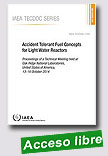 |
Accident Tolerant Fuel Concepts for Light Water Reactors
IAEA TECDOC, 2016, 372 p.
This publication provides a record of a Technical Meeting on Accident Tolerant Fuel Concepts for Light Water Reactors, held at Oak Ridge National Laboratories in 2014, to consider the early stages of research and development into accident tolerant fuel. Following the Fukushima Daiichi accident, a review of fuel behaviour has been initiated. Zirconium alloy clad fuel operates successfully to high burnup and is the result of 40 years of continuous development and improvement. .
|
However, under severe accident conditions, the high temperature zirconium-steam interaction can be a major source of damage to the power plant. This publication considers different ways to ameliorate this problem without sacrificing the good behaviour of fuel in normal operation. Options range from making the cladding more resistant to the high temperature steam oxidation through to completely new fuel designs with ceramic cladding and different fuel materials.
Extraído de: http://www-pub.iaea.org/books/IAEABooks/10972/Accident-Tolerant-Fuel-Concepts-for-Light-Water-Reactor
|
 |
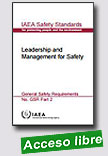 |
Leadership and Management for Safety
IAEA Safety Standards Series, 2016, 26 p.
This Safety Requirements publication establishes requirements that support Principle 3 of the Fundamental Safety Principles in relation to establishing, sustaining and continuously improving leadership and management for safety and an integrated management system. It emphasizes that leadership for safety, management for safety, an effective management system and a systemic approach (i.e. an approach in which interactions between technical, human and |
organizational factors are duly considered) are all essential to the specification and application of adequate safety measures and to the fostering of a strong safety culture. Leadership and an effective management system will integrate safety, health, environmental, security, quality, human-and-organizational factor, societal and economic elements. The management system will ensure the fostering of a strong safety culture, regular assessment of performance and the application of lessons from experience. The publication is intended for use by regulatory bodies, operating organizations (registrants and licensees) and other organizations concerned with facilities and activities that give rise to radiation risks.
Extraído de: http://www-pub.iaea.org/books/IAEABooks/11070/Leadership-and-Management-for-Safety
|
 |
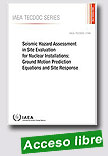 |
Seismic Hazard Assessment in Site Evaluation for Nuclear Installations: Ground Motion Prediction Equations and Site Response
IAEA TECDOC, 2016, No. 1796 , 136 p.
The objective of this publication is to provide the state-of-the-art practice and detailed technical elements related to ground motion evaluation by ground motion prediction equations (GMPEs) and site response in the context of seismic hazard assessments as recommended in IAEA Safety Standards Series No. SSG-9, Seismic Hazards in Site Evaluation for
|
Nuclear Installations. The publication includes the basics of GMPEs, ground motion simulation, selection and adjustment of GMPEs, site characterization, and modelling of site response in order to improve seismic hazard assessment. The text aims at delineating the most important aspects of these topics (including current practices, criticalities and open problems) within a coherent framework. In particular, attention has been devoted to filling conceptual gaps. It is written as a reference text for trained users who are responsible for planning preparatory seismic hazard analyses for siting of all nuclear installations and/or providing constraints for anti-seismic design and retrofitting of existing structures.
Extraído de: http://www-pub.iaea.org/books/IAEABooks/11067/Seismic-Hazard-Assessment-in-Site-Evaluation-for-Nuclear-Installations-Ground-Motion-Pred
|
 |
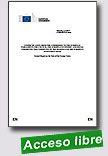 |
This report looks at progress made since the first state of the energy union in November 2015. It also assesses ongoing challenges.
The EU as a whole has continued to make good progress on delivering the energy union objectives, in particular on the 2020 energy and climate targets.
|
Extraído de: https://ec.europa.eu/commission/publications/2nd-report-state-energy-union_en
|
 |
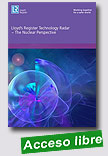 |
Lloyd’s Register Technology Radar – The Nuclear Perspective
Lloyd’s Register, February 2017, 24 p.
The results used in this report come from a Lloyd’s Register survey conducted in November 2016 by Longitude Research. Of the 583 total respondents from across the low carbon sector, 154 identified themselves as operating in nuclear; this is the group we refer to here as ‘nuclear respondents’.
|
Extraído de: http://www.lr.org/en/low-carbon-power/technology-radar.aspx?
utm_source=publication&utm_medium=offline&utm_term=
lrlowcarbon&utm_content=website&utm_campaign=techradarlowcarbon
|
 |
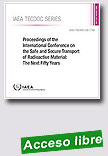
|
Proceedings of the International Conference on the Safe and Secure Transport of Radioactive Material: The Next Fifty Years
IAEA TECDOC (CD-ROM), 2016, s. p.
This publication presents the proceedings of an international conference on safe and secure transport of radioactive material, held in Vienna, 2011. The conference provided an ideal opportunity to discuss and review, in an international context, issues related to the safe and secure transport of nuclear and radioactive materials, allowing best practices to |
be identified and shared. The conference participants were charged with developing recommendations to create a safe, secure and sustainable framework for the transport of radioactive material for the next 50 years.
Extraído de: http://www-pub.iaea.org/books/IAEABooks/11027/Proceedings-of-the-International-Conference-on-the-Safe-and-Secure-Transport-of-Radioactiv
|
 |
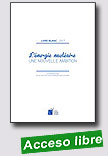 |
Une nouvelle ambition pour l’énergie nucléaire - Livre Blanc 2017
Société Française d’Energie Nucléaire (SFEN), Février 2017, 36 p.
La SFEN publie pour la première fois, un livre blanc de propositions destiné aux candidats à l’élection présidentielle. Ce travail, fruit des réflexions de ses membres, professionnels et spécialistes de l’énergie nucléaire, révèle la nécessité de donner une nouvelle ambition à la filière nucléaire française.
|
Extraído de: http://www.sfen.org/sites/default/files/public/atoms/files/livre_blanc_sfen_2017_-_une_nouvelle_ambition_pour_lenergie_nucleaire.pdf
|
 |
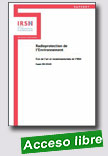 |
Radioprotection de l’environnement : État de l’art et recommandations de l’IRSN
Institut de Radioprotection et de Sûreté Nucléaire, 13/09/2016, 142 p.
IRSN a réalisé un état de l'art concernant l'évaluation du risque radiologique dans l'environnement. Ce travail a conduit l'Institut a formulé dix recommandations en vue de nourrir la réflexion sur la transposition de la directive européenne relative aux normes de base en radioprotection.
La France a obligation de transposer dans sa législation au |
plus tard à l’horizon 2018 la nouvelle directive européenne relative aux normes de base en radioprotection. Dans cette optique, et en lien avec une évolution internationale rapide du domaine, des réflexions sont en cours au plan national autour des méthodologies et corpus de connaissances, qui sont ou pourraient être utilisés tant par les exploitants que par les pouvoirs publics pour l’évaluation du risque encouru par les écosystèmes exposés aux rayonnements ionisants.
Afin de contribuer aux échanges, l’IRSN a réalisé un état de l’art préliminaire qui comporte également une revue des pratiques internationales en la matière. Ce travail a finalement conduit l’institut à formuler une série de dix recommandations concernant l’évaluation du risque radiologique pour les écosystèmes dans le cadre du fonctionnement normal des installations nucléaires ou les situations d’exposition non planifiée (post-accidentelle, marquage ou pollution consécutive à un incident ou accident).
Extraído de: http://www.irsn.fr/FR/expertise/rapports_expertise/surveillance-environnement/Pages/Radioprotection-environnement-Etat-art-recommandations-IRSN.aspx#.WJxSgm8rK70
|
 |
|
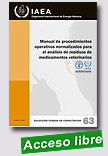
|
Manual de Procedimientos Operativos Normalizados para el Análisis de Residuos de Medicamentos Veterinarios
OIEA Collección Cursos de Capacitación, 2017, 82 p.
El propósito de este manual es ayudar a los laboratorios de ensayo de alimentos y ambientales principalmente en la vigilancia y el control de rutina de los residuos de algunos medicamentos veterinarios en productos de origen animal, pero también en determinadas muestras ambientales.
El manual también puede servir de apoyo a actividades de investigación pertinentes.
|
Extraído de: http://www-pub.iaea.org/MTCD/Publications/PDF/TCS-63_S_web.pdf
|
 |
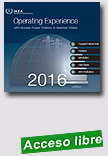 |
Operating Experience with Nuclear Power Stations in Member States (2016 Edition)
IAEA, 2016, 1.540 p.
This CD-ROM contains the 47th edition of the IAEA’s series of annual reports on operating experience with nuclear power plants in Member States. It is a direct output from the IAEA’s Power Reactor Information System (PRIS) and contains information on electricity production and overall performance of individual plants during 2015. In addition to annual information, the report contains a historical summary of performance
|
during the lifetime of individual plants and figures illustrating worldwide performance of the nuclear industry. The CD-ROM contains also an overview of design characteristics and dashboards of all operating nuclear power plants worldwide.
Extraído de: http://www-pub.iaea.org/books/IAEABooks/11124/Manual-of-Standard-Operating-Procedures-for-Veterinary-Drug-Residue-Analysis
|
 |
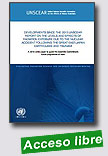 |
Developments Since the 2013 UNSCEAR Report on the Levels and Effects of Radiation Exposure Due to the Nuclear Accident Following the Great East-Japan Earthquake and Tsunami
United Nations Scientific Committee on the Effects of Atomic Radiation (UNSCEAR), 2016, 52 p.
The second UNSCEAR White Paper on this subject continues the ongoing effort to systematically monitor and evaluate relevant, new scientific information that has emerged since the launch of the Committee's 2013 Report on the Fukushima
|
Daiichi accident. Including the 2015 White Paper, more than 200 publications have been reviewed, from October 2012 onwards. The White Paper 2016 presents a sound analysis of the recent information, to identify whether it materially affected conclusions of the 2013 Report or if it addressed research needs that had been identified. The thematic areas covered: releases and dispersion for the atmosphere and marine environment; evaluations of doses for the public and workers; health implications for the workers and the public; and doses and effects for non-human biota. A new theme: Transfer of radionuclides in terrestrial and freshwater environments has been added.
Report
Extraído de:http://www.unscear.org/unscear/en/publications/Fukushima_WP2016.html
|
 |
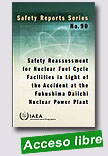 |
Safety Reassessment for Nuclear Fuel Cycle Facilities in Light of the Accident at the Fukushima Daiichi Nuclear Power Plant
IAEA Safety Reports Series, 2016, 45 p.
This publication provides guidance on performing safety reassessments, in the light of the accident at the Fukushima Daiichi nuclear power plant and in accordance with a graded approach, for nuclear fuel cycle facilities of all types. Although this publication primarily focuses on nuclear fuel cycle facilities that are in operation, the guidance it provides also applies to
|
facilities that are in the design and construction phases. It is not intended to replace or supersede any of the requirements or guidance provided by the relevant IAEA Safety Standards, including those covering safety analysis, evaluation of seismic and external hazards, and emergency preparedness and response for nuclear fuel cycle facilities. However, this publication should be used in close conjunction with these Safety Standards.
Extraído de: http://www-pub.iaea.org/books/IAEABooks/10933/Safety-Reassessment-for-Nuclear-Fuel-Cycle-Facilities-in-Light-of-the-Accident-at-the-Fukushima-Daiichi-Nuclear-Power-Plant
|
 |
 |
Performance of Models in Radiological Impact Assessment for Normal Operation - Report of Working Group 1 Reference Methodologies for Controlling Discharges of Routine Releases of EMRAS II Topical Heading Reference Approaches for Human Dose Assessment - Environmental Modelling for Radiation Safety (EMRAS II) Programme
IAEA TECDOC, 2017, 96 p.
This publication provides the results from Working Group 1, on Reference Methodologies for Controlling Discharges of Routine Releases, of the IAEA’s EMRAS II (Environmental |
Modelling for Radiation Safety) programme, which ran from 2009 to 2011. This Working Group carried out an intercomparison of methods used for assessing radiological impacts to people and the environment due to authorized releases of radionuclides during normal operation of nuclear facilities. Three important types of exposure scenarios were considered, those related to atmospheric, marine and river releases. The publication describes the details of the hypothetical radioactive release scenarios, the environmental pathways considered, the environmental transfer models applied, the calculation methods and the results obtained. An analysis of the results and the main findings and conclusions relevant for the use of the described input data and methodologies in regulatory applications is included. The publication also presents considerations on selection of the ‘representative person’ and a summary of the different approaches in some States for the regulatory control of radioactive discharges. Input data is included in the annex.
Extraído de: http://www-pub.iaea.org/books/IAEABooks/11141/Performance-of-Models-in-Radiological-Impact-Assessment-for-Normal-Operation
|
| |
| |
|
|
| |
| |
|
|
| |
| |
|
|
| |
| |
|
|
|
